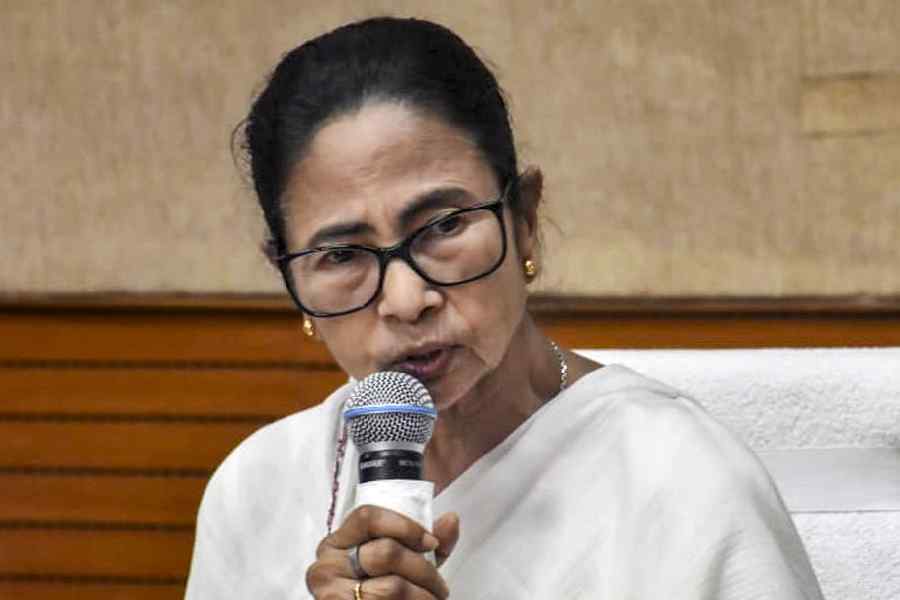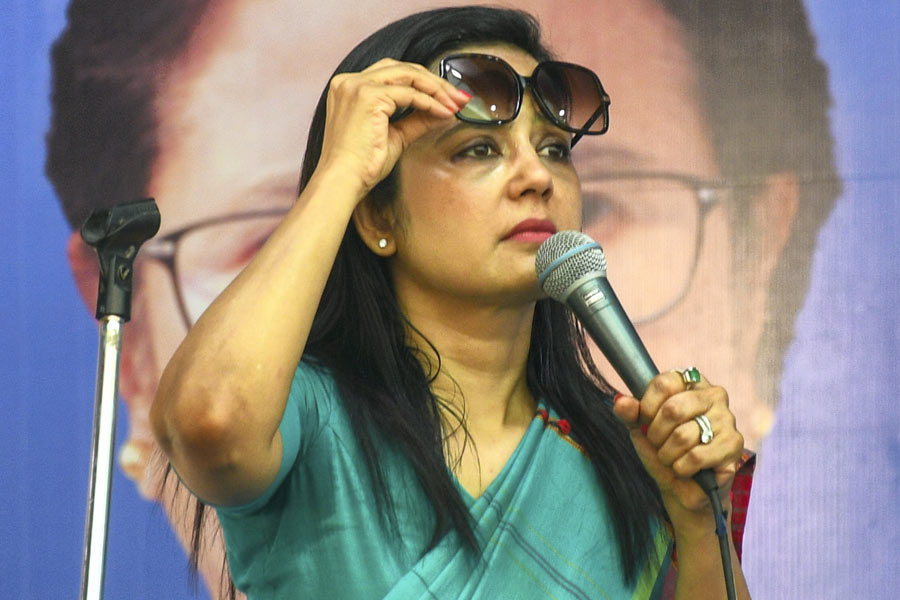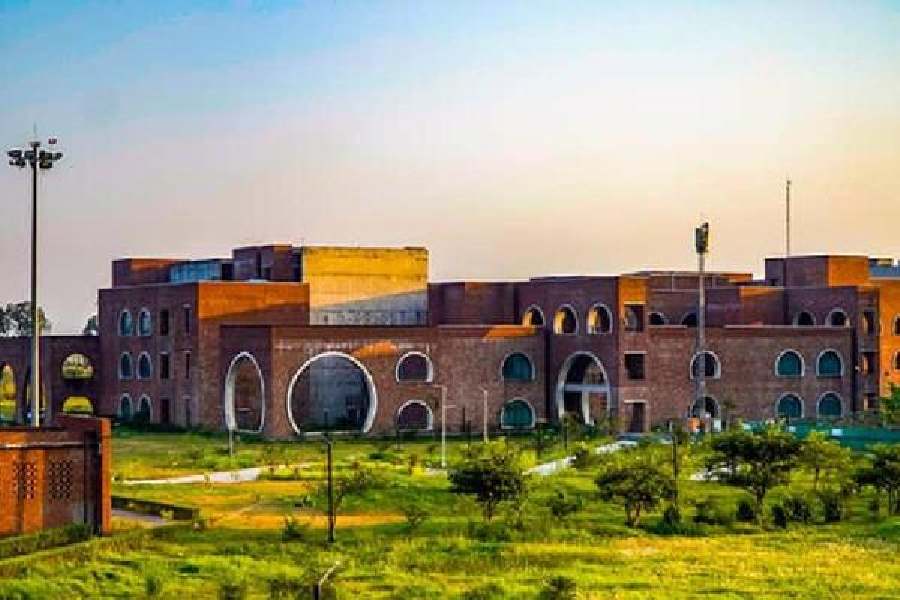As good as it gets
Ever since Mandal and mandir became a part of every Indian's lexicon in the late Eighties and early Nineties, politics in Uttar Pradesh has never been the same. Social plates shifted radically. Irrefutable and time-tested caste combinations, the key to many a resounding electoral triumph, were blown to smithereens. And all parties struggled to readjust their caste and communal arithmetic to meet the emerging demands of the new fractured political order.
For the Bharatiya Janata Party that struggle continues even a decade later. Finding a leader who could harmonise the contrasting currents of mandir and Mandal, of religion and caste politics, is no simple task. With the recent elevation of Vinay Katiyar - the bellicose former Bajrang Dal boss - as the president of the BJP's Uttar Pradesh unit, the party is planning in advance for the 2004 Lok Sabha polls. 'The BJP is the number three party in Uttar Pradesh now. My job is to make it number one,' says the 49-year-old Lok Sabha MP from Faizabad, also an accused in the Babri Masjid demolition case.
It all boils down to electoral arithmetic. Katiyar is a kurmi, an Other Backward Caste. For a party that has been searching for an OBC leader of substance in the make-or-break northern Indian state ever since former chief minister and OBC leader Kalyan Singh's acrimonious exit, this is another attempt to get the caste combination right. Kurmis form about 3.5 per cent of UP's population. Post-poll analysts attribute the BJP's rout in the state assembly elections earlier this year to the fact that the party was unable to get even a decent percentage of either the non-yadav OBC or the Most Backward Caste votes. This is a step which, the BJP hopes, would bring them over to their side of the fence.
Dalit intellectual Chandrabhan Prasad points out that the move was also prompted by the fact that Mulayam Singh, Kalyan Singh and kurmi leader Sonelal Patel are coming together in a move billed as the mahasangam. 'This step could place the yadavs, the Muslims, the lodhs and the kurmis on one platform. Together they would be a formidable political combination by any standards. This is BJP's way of facing the challenge,' he says.
That apart, Katiyar is also the pugnacious face of the Ayodhya movement. With the BJP increasingly falling back on its Hindutva agenda in recent times as is evident in Gujarat, the former RSS pracharak, who first made his mark as a karsevak and an organiser in the movement leading to the Babri Masjid demolition, seems to be the right man for the job.
But organising a party where factionalism is rampant is a far more unenviable task than handling a bunch of motivated karsevaks. In a party where leaders such as Kalraj Mishra and Rajnath Singh can hardly see eye to eye, their public posturing apart, it is no simple task to bring the thakurs, the brahmins, the kurmis and other non-yadav OBCs under the Hindutva umbrella. That too in a regime headed by dalits. 'There is no factionalism in the party,' insists Katiyar. But his words ring hollow in the cold light of facts.
There is no denying that Katiyar is being tactful, a virtue seldom associated with the former Bajrang Dal chief. The man who gave muscle to the Ramjanmabhoomi movement provoked widespread protests in Kashmir in March following a statement that the historic Hazratbal shrine in Srinagar was once a temple founded by an obscure Hindu saint and that he wanted to move the court to reclaim it. His personal staff later denied that he had ever made the remark. But, interestingly, Katiyar is unwilling to come clean on the affair. 'Why are you asking me an old question? My answer is: no comments,' he says, when asked if he had ever made the remark.
That is not the only controversy associated with him. In the early Nineties, Uttar Pradesh was rocked by a sensational case when Kusum Mishra, the daughter of a small-time government official, accused Katiyar and his henchman of keeping her forcibly in confinement and raping her. The story made newspaper headlines. But eventually the girl withdrew the case. That apart, Katiyar has also been accused of land grabbing, making money from the lucrative business of ghats and using strong-arm tactics to get things done.
In Parliament too, Katiyar came to notice for the wrong reasons when he came to near fistcuffs with Janata Dal (U) leader Devendra Prasad Yadav. Also, he hardly endeared himself to the more liberal members of the BJP when he dubbed the Vajpayee regime 'Raavan raj' in Lok Sabha. The new job means that the former Bajrang Dal boss has to stop shooting off his mouth. Just as he has stopped eating kheer, his favourite dish, after he was diagnosed with diabetes.
Katiyar's roots with the Rashtriya Swayamsevak Sangh run deep although his farmer father was a Congressman. Way back in 1964, at the age of 11, he started going to the shakhas and became a full-timer in 1974. The BJP leader later earned his Master's in sociology from Kanpur University. However, by his own admission, his inspiration and guide is none other than Hanumanji.
Katiyar won his spurs, as an activist and an organiser, in the build-up leading to the demolition of the Babri Masjid. He is said to have unfurled the saffron flag atop the mosque in 1991. The same year he won the Lok Sabha elections from Faizabad constituency, which includes Ayodhya, by a handsome margin. He won again in 1996 but lost in 1998. Katiyar regained his seat in 1999, forging a near unbeatable combination of kurmis, brahmins and thakurs. It is this combination and more that his party would like him to work out for Uttar Pradesh as a whole.
That's easier said than done. So far, Katiyar's work profile has been restricted to activities in and around Ayodhya. Now, he would have to broaden his perspective and take into account the specific needs of the state's different regions. He doesn't want to divulge his plan of action, if he has any. 'I will walk and the caravan will follow,' is all he says in Hindi. Even on Ramjanmabhoomi, he is reticent. 'Everybody knows my views on the issue,' is what he reveals.
It can be safely suggested that though OBC Vinay Katiyar's rise to the hot seat proves that the BJP doesn't really want to give up on Mandal, the mandir issue is high on the party's agenda for the 2004 elections. With a man at the helm who says his home address in Ayodhya is Hindudham, Ramkot, it could be little else. Unless, of course, his guide Hanumanji wants it to be otherwise.
 Friday, 31 October 2025
Friday, 31 October 2025









